News
The latest updates on what’s happening at Experian. In this section, you’ll find company news including product announcements, industry awards, strategic partnerships, and other milestones. Whether we’re launching something new, teaming up with a key partner, or being recognized for our work, this is where we’ll share the moments that matter.
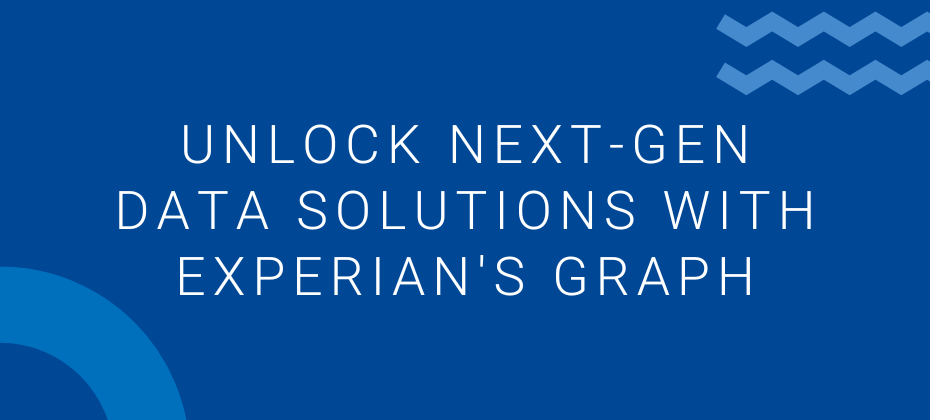
Today, Experian announced a suite of next-generation solutions that will help marketers navigate the challenges of cookie deprecation. Powered by the Experian Graph, these solutions will enable marketers to maintain behavioral targeting at scale. In partnership with Audigent, Experian announced the early-stage limited availability of Experian Audiences inside the Privacy Sandbox through the Protected Audiences API. Experian has also co-developed, with Audigent, an AI-driven contextual targeting solution layered with Experian’s rich Experian Marketing Data to continue delivering marketers scale and performance from their campaigns. Finally, Experian continues to evolve its signal-agnostic Graph, including coverage for industry-leading universal IDs, and plans to support IPv6 and phone-based UID2s. With these solutions, marketers can confidently deliver behavioral targeting after cookie deprecation and benefit from the power of Experian Marketing Data in their contextually targeted campaigns. As the industry prepares for ongoing signal loss and tightened privacy regulations, these solutions and further investments in Experian's identity Graph ensure Experian continues to power data-driven advertising and achieves the needs of modern marketers: addressable advertising, cross-device targeting, and measurement. Experian’s Graph allows marketers to target audiences in Privacy Sandbox via Audigent Building off Audigent’s work with Privacy Sandbox, Experian and Audigent tested the scale of Experian audience data in Privacy Sandbox and found that over 15 days, they were able to match audiences to over 150M Chrome browsers in the US. This solution – now in alpha – is powered by Experian’s Graph, leveraging an array of identifiers, including hashed emails and Hadron IDs. While the scale of targetable users and ad opportunities is still growing with the adoption of Privacy Sandbox by publishers and SSPs, the results are strong and provide a real-life illustration of how advertisers will be able to reach audiences in this new environment. “As the industry’s leader in building Interest Group segments in PAAPI, Audigent is thrilled to see world-class data partners like Experian work with us to build innovative solutions that deliver value now and will be absolutely critical as third-party cookies are deprecated in 2025.”DREW STEIN, FOUNDER AND CEO, AUDIGENT Data-driven contextual targeting is available through partnerships with Audigent and Peer39 As marketers prepare for cookie deprecation, they are turning to tried and true methods of targeting, like contextual, as they offer targeting strategies based on content and behavior instead of user identity. Experian is co-developing ID-less solutions that upgrade contextual targeting by intelligently indexing and infusing Experian’s rich Experian Marketing Data against contextual signals. By using these products, advertisers gain the ability to reach their audiences with a new and improved solution that delivers scale, performance, and value. We have beta launched a unique solution with Audigent that indexes Experian syndicated audiences against contextual signals through the power of the Experian Graph and Audigent’s Hadron ID to create PMPs that can be activated on any DSP. As part of the beta, a leading national advertiser ran a test via Audigent to see if this fully cookieless solution could deliver results at parity or better than today's ID-based options. The scaled 15-day flight not only met existing campaign delivery targets but also exceeded CTR goals by 25%. Experian has also partnered with Peer39 to make our geo-indexed syndicated audiences (e.g., Purchase Affinity and Demographic data) available through Peer39's contextual integrations. This allows marketers to confidently reach the right audiences in their digital marketing campaigns without third-party cookies. Experian's Graph now includes leading Universal IDs With the ever-changing nature of signal and identity, we’re continuing steps to be interoperable, and Experian's signal-agnostic Graph now supports the leading universal IDs: UID2s, ID5 IDs, and Hadron IDs. This is in addition to hashed e-mails, mobile ad IDs, and Connected TV IDs. Our strong coverage against cookieless identifiers means marketers will maintain addressable advertising as the Graph continues resolving data back to consumers and households in a privacy-centric way. In addition to providing greater breadth and depth of signals to reach US consumers, Experian's Graph is rebuilt weekly, which means our connections are highly accurate, refreshed, and addressable. “Experian is a valued partner in Nexxen's unified identity graph powering the Nexxen data platforms, which bring us the ability to seamlessly onboard client data, activate campaigns, and measure performance while maximizing biddable opportunities for our advertisers. They help ensure our clients can continue reaching audiences at scale and successfully execute campaigns.”Chance Johnson, Chief Commercial Officer, Nexxen Investments planned over the next year continue to ensure a Graph resilient to signal loss As connected TV (CTV) viewing continues to dominate, the importance of being able to match to IPv6 increases. Later this year, we’ll add support for IPv6 in our Graph as well as phone-based UID2s. This is in addition to our current coverage of IPv4 and email-based UID2s. As a result, all IP signals and UID2s will be resolved back to Experian’s household and individual profiles and their associated devices, which means marketers and platforms can better understand the full customer journey and reach people across their devices. Experian’s toolkit of cookieless solutions maintains addressability and ensures marketers can continue to do privacy-safe behavioral targeting at scale As the industry braces for the challenges posed by signal loss and evolving regulation, the unparalleled breadth, depth, and stability of Experian’s Graph empowers our partners across the ad tech ecosystem to confidently achieve their objectives and navigate uncertainty. What are you waiting for? Fill out the form to begin testing one of these cookieless solutions. Get started About the author Budi Tanzi, VP of Product and Solution Engineering, Experian Marketing Services Budi Tanzi is the Vice President of Product at Experian Marketing Services, overseeing all Identity Products. Prior to joining Experian, Budi worked at various stakeholders of the ad-tech ecosystem, such as Tapad, Sizmek and StrikeAd. During his career, he held leadership roles in both Product Management and Solution Engineering. Budi has been living in New York for almost 11 years and enjoys being outdoors as well as sailing around NYC whenever possible. Latest posts

At Experian, we power data-driven advertising through connectivity. Today, we're excited to introduce our newest offering, which drives that connectivity: Experian Third-Party Onboarding. This new capability empowers third-party data providers by streamlining the monetization of their audiences through Experian’s expansive network of over 20 programmatic, social, and TV platforms. Data onboarding typically presents challenges, including complicated integration processes, limited ID matching capabilities, and opaque pricing structures, all compounded by less-than-ideal customer service. Experian Third-Party Onboarding eliminates the common barriers in the onboarding process and leaves users with a simple yet powerful solution for data providers to increase the adoption of their audiences and maximize their revenue. A leap forward in data connectivity Experian Third-Party Onboarding builds upon the investment and infrastructure used to distribute Experian's own audience segments. Notably, in 2020, we began the transformation of moving away from third-party partners to using our own direct connections for audience distribution. Compared to the competition, Experian’s Third-Party Onboarding capabilities offers data providers: Enhanced programmatic addressability: 50% increase in programmatic addressability compared to the competition. Superior CTV addressability: As a top identity partner in TV, we provide a 73% increase in CTV addressability as compared to the competition. Vast digital reach: Approximately 3.8B digital IDs that are active and addressable on a weekly basis. The first data providers to use Experian’s third-party onboarding capabilities are Adentro, Kontext, L2, and Webbula. "Moving beyond cookie-only third-party onboarding solutions is critical for our users in the age of cookie deprecation, and Experian's identity capabilities do that. Experian's match rates and speed to turn around audiences to a large number of platforms is critical for our political buyers during this very busy campaign season."Paul Westcott, EVP, L2 Benefits to Experian Third-Party Onboarding Experian’s unique onboarding process enhances current capabilities and sets new benchmarks in the industry. The comprehensive benefits of Experian’s Third-Party Onboarding include: Future-proof your addressability: With Experian's advanced digital and offline identity capabilities embedded within this new onboarding solution, user audiences will automatically be expanded to a deep set of identifiers (e.g., CTV IDs, MAIDs, IPs, UID2s, ID5s, and more) to ensure scale and maximum addressability. Seize the CTV opportunity: Tap into the explosive growth of connected TV (CTV), the fastest-growing major ad channel in the U.S., with connectivity to more than ten TV destinations. Simple pricing structure: Straightforward revenue-share pricing structure free of hidden costs, ensuring clarity and trust in all financial dealings. Streamlined reporting: Gain valuable insights with self-service reporting available within days of receiving data from the platform. Drive growth and adoption with faster reporting, allowing you to track usage by segment, advertiser, or destination effortlessly. Efficiency and support: A self-service, user-friendly interface gives you control over taxonomy field names, CPMs, and destinations. It is complemented by a dedicated account team, which reduces the burden on user resources and guarantees a seamless experience from onboarding to activation to reporting. Support for syndicated and custom audiences: Seamlessly onboard bulk syndicated audience taxonomies and custom audiences to programmatic, social, and TV platforms through our existing integrations. “Both activation platforms and data providers familiar with our world-class identity capabilities and top-notch service have proactively asked Experian to provide third-party onboarding services. After listening carefully to how we can improve upon their current setup, we are excited to bring a solution to the market that directly addresses their needs.”Scott Kozub, VP, Product Management, Experian Stay ahead of the curve Maintaining a competitive edge with your data is no longer optional; it's imperative. Experian Third-Party Onboarding arms users with advanced connectivity, unparalleled data expertise, and thorough support, positioning them at the forefront of industry innovations. Reach out to our team today to learn more about Experian Third-Party Onboarding and how it can make your data go further. Go further now Read the AdExchanger press release about Third-Party Onboarding Learn more Latest posts
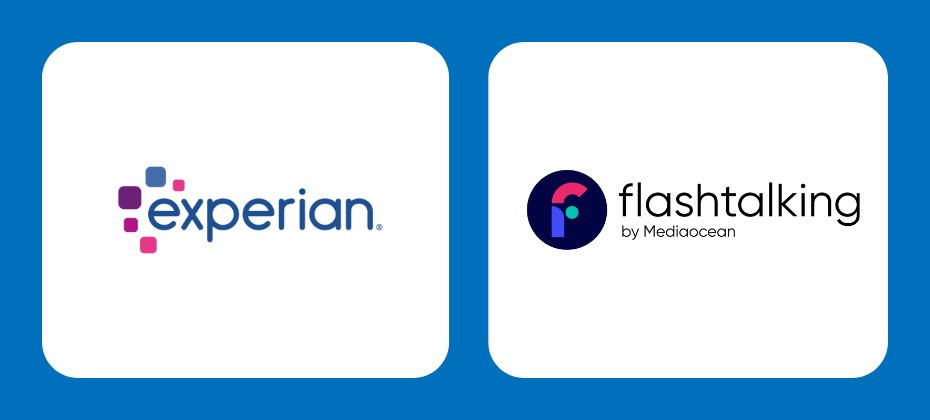
In the ever-evolving and soon-to-be cookieless advertising world, brands and agencies need help finding and maintaining access to accurate and comprehensive marketing data that enables them to reach the audience segments that matter most. Flashtalking by Mediaocean and Experian have a collaboration in place to do just that. Through this partnership, Experian’s more than 2,400 syndicated audiences are available for activation within the Flashtalking platform and its Social Ads Manager. “There are a lot of audience segments and data disappearing within the advertising industry right now because of the deprecation of third-party cookies, but Experian’s syndicated audiences are built for this new privacy-first world. Through this partnership, Flashtalking's clients gain access to some of the industry's most actionable on-the-shelf and custom audience capabilities for activation and targeting across the publishers and social platforms that matter most. It’s as easy as identifying the segments that matter to your brand and activating them everywhere they exist with a few simple clicks.” - Ben Kartzman, COO, Flashtalking by Mediaocean This partnership unites the power of Flashtalking's best-in-class independent omnichannel advertising platform with Experian’s comprehensive audience intelligence, which spans 126 million households and 250 million consumers. “For the same reason that brands are investing more deeply in first-party data in the wake of third-party cookie deprecation, having access to the right audience segments has never been more important. Mediaocean offers access to the only independent ad server that’s powering truly omnichannel, personalized experiences, and we’re thrilled to be amplifying their ability to do that through Experian’s expansive audience segments.” - Colleen Dawe, Director, Sell-Side Sales, Experian The Flashtalking Social Ads Manager has long-standing relationships and technical integrations with all major platforms, including Facebook, Google Demand Gen, Instagram, LinkedIn, Pinterest, Snap, TikTok, and a forthcoming integration with Reddit. Experian data can be deployed through custom and syndicated segments within these platforms, providing clients with both reach and precision. The power of the Experian - Flashtalking collaboration Benefits to marketing organizations that tap Experian data and audience segments via the Flashtalking platform include the following: A unified customer view: Marketers can use Experian's comprehensive data within Flashtalking to create a unified view of the customer across multiple channels. This helps craft cohesive marketing strategies that deliver consistent messages, enhancing customer experiences and brand perception. Enhanced targeting and personalization: Marketers can access Experian's detailed audience segmentation and insights within Flashtalking to target campaigns effectively. They can personalize messages at scale based on demographic, psychographic, and behavioral data to increase engagement and conversion rates across all channels. Optimized cross-channel strategies: With Flashtalking's cross-channel capabilities, marketers can integrate Experian's insights to understand how different segments interact with various channels. This enables the design of optimized cross-channel strategies that cater to the preferences and behaviors of different audiences. Data-driven decision-making: This partnership combines Experian's in-depth consumer insights with Flashtalking's analytics and reporting tools to help marketers make informed decisions. This data-driven approach can improve campaign performance, optimize media spend, and reveal untapped market opportunities. Local market activation: Marketers can also use Experian's geographic and location-based data within Flashtalking to tailor campaigns to local markets. This localized approach can enhance relevance and response rates, providing a competitive edge in regional marketing efforts. Improved media efficiency: This collaboration also enables organizations to harness the power of Experian's data within Flashtalking to improve media planning and buying. They can identify the most effective channels and timeframes for reaching specific audiences, leading to more efficient and cost-effective media investments. Why choose Experian in Flashtalking For over 50 years, we have been a trusted single-source provider of data management solutions. Our expertise in offline and digital identity has enabled us to curate data from over 200 direct and active sources, offering a comprehensive view of consumers with granularity, accuracy and scale. Using this data, we can craft our syndicated audiences to cover many verticals and specialty categories. For example, a Flashtalking client in the automotive industry can supercharge its campaign efforts. Experian has found that automotive advertisers build segmentation using four major data categories: Automotive Demographics Lifestyles and Interests Retail Shoppers: Purchase-Based Directly within the Flashtalking platform, multiple syndicated audiences from Experian in each major data category specific to automotive are available that brands and agencies can activate on-the-shelf to reach consumers with targeted messaging and retargeting. Experian and Flashtalking are future-proofing advertising Together, Flashtalking and Experian will ensure advertisers can continue to deliver personalized, relevant, and impactful messages and experiences to consumers despite ongoing shifts within the data-driven marketing landscape, including the deprecation of third-party cookies in Chrome. This partnership offers greater access to audience segments built on privacy-safe insights with expansive reach, scale, and flexibility. Connect with us to learn more about how you can access Experian’s syndicated audiences through Flashtalking by Mediaocean. Contact us today About Flashtalking by Mediaocean Flashtalking unleashes the power of creative to make media work better. As the leading independent platform for personalization and intelligence across all marketing channels, our Creative Ad Tech bridges the gap between creative and media. We provide AI and automation to connect the silos between teams and deliver more efficient production, versioning, and distribution of creative. Our solutions operate at scale across CTV, Video, Display, Social, Native, Audio, DOOH, and Retail Media channels. As part of Mediaocean, Flashtalking is tied into the industry’s core ad infrastructure for omnichannel planning, buying, and billing. Visit flashtalking.com to learn more. Latest posts
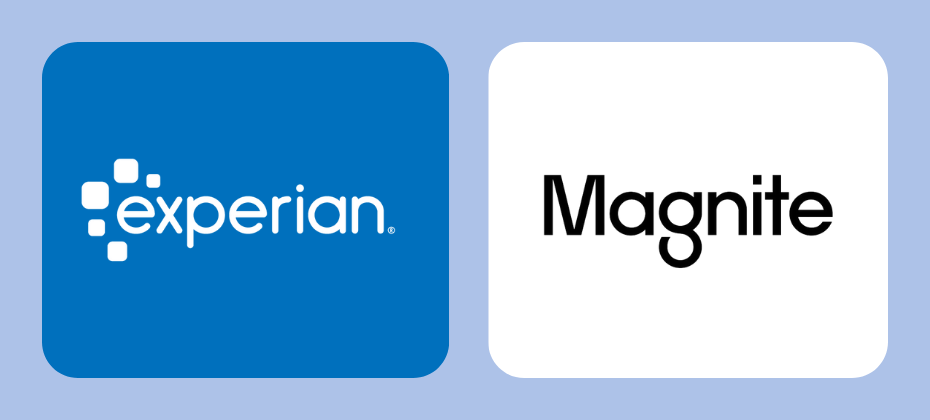
Magnite and Experian have formed a strategic integration to enhance cross-device audience targeting in the advertising industry. Magnite, the largest independent sell-side platform, and Experian, a leader in consumer data and identity solutions, aim to optimize advertising capabilities by activating Experian's Consumer View in Magnite Access, an omnichannel audience product suite. This marks one of Experian’s first forays into a direct sell-side integration, a crucial step for the cookieless era. This collaboration offers targeting and efficiency across digital channels, providing advertisers and agencies with a more effective way to reach consumers. With Experian's robust deterministic offline data, generated from consumer purchase activity, enriched with insights on over 250 million U.S. consumers and 126 million U.S. households, advertisers can look forward to a new benchmark in targeted advertising available through Magnite Access. Thriving in a cookieless world With the looming deprecation of third-party cookies, audience, and identity solutions using first-party data are shifting to the sell-side. To that end, Magnite developed Magnite Access, a suite of omnichannel audience products that make it easier for media owners and their advertising partners to maximize the value of their first-party data assets. Access is adept at thriving in a post-cookie world through its effective utilization of sell-side first-party data, including within Magnite Streaming and SpringServe. Magnite Access’ deterministic and probabilistic tools provide sellers and buyers with a comprehensive solution to leverage their first-party data for audience targeting and insights. Experian's solutions are built to work efficiently in offline environments, making them well-equipped to thrive in a cookieless world. Brands can benefit from Experian's deep integrations within the ecosystem, providing data and audience solutions designed to perform in cookieless environments. "We're excited about the collaborative approach between Magnite and Experian. This off-the-shelf integration of Experian's syndicated audiences and the streamlined ability to receive custom audiences will provide a more accurate and cohesive consumer view, allowing us to reach our target audience and enhance campaign performance seamlessly."sam bloom, ceo, camelot Reach and impact As companies continue to rely on data-driven insights to make smarter, more efficient business decisions, partnerships between leading data and technology providers are becoming increasingly valuable. "Integrating with Magnite allows us to translate our extensive offline and online data into actionable, intelligent solutions for making smarter, more efficient business decisions. With Magnite's expertise in the omnichannel sell-side environment, this partnership is poised to empower businesses with the tools they need to succeed in today's data-driven landscape."chris feo, svp, sales & partnerships, experian Strengthening foundations within streaming Magnite's cutting-edge streaming solutions, integrated with Experian's robust data, facilitate a connection between data and inventory, providing enhanced targeting capabilities and consumer insights. "By integrating Experian's Consumer View capabilities into our platform, we are enabling advertisers to unlock improved targeting capabilities while benefiting from Experian's wealth of consumer insights. Our collaboration with Experian amplifies the value of our streaming solutions and enhances the overall advertising ecosystem by seamlessly connecting data, identity, and inventory."kristen williams, svp, strategic partnerships, magnite Precision and innovation: A new advertising era The synergistic partnership between Magnite and Experian is paving the way for a new era in advertising, offering targeting efficiency across digital channels. This collaboration is not merely a confluence of technologies but a testament to both companies' relentless pursuit of excellence in creating a consumer-conscious advertising ecosystem. By harnessing the wealth of consumer insights and integrating state-of-the-art technologies, Magnite and Experian are contributing to shaping the future of advertising, emphasizing accuracy and efficiency. It's a revolutionary stride toward understanding and reaching the consumer in more meaningful and impactful ways, setting new benchmarks in the advertising world. In a rapidly evolving digital landscape, this collaboration stands as a beacon, guiding brands toward intelligent, informed, and innovative advertising solutions, redefining the possibilities in targeted advertising and audience solutions. Connect with us to learn more about how you can access Experian’s Consumer View data solutions in Magnite Access. To learn more about our partner Magnite, visit their website. Latest posts
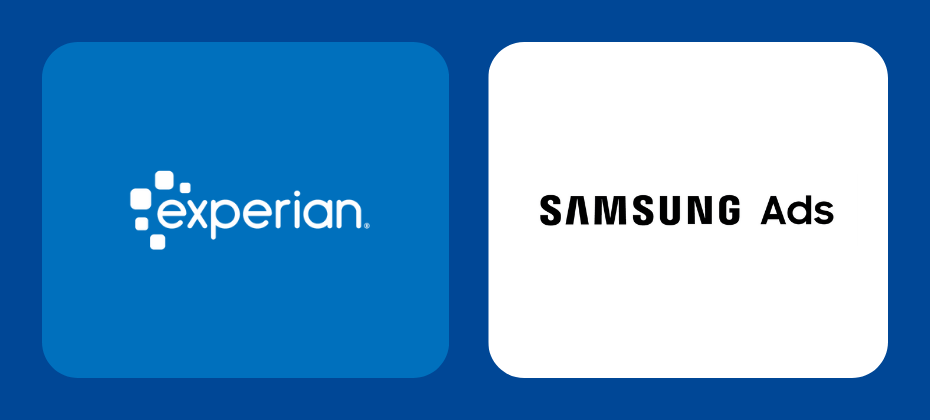
In the fast-paced advertising world, collaboration is crucial to keep up with the flux in consumer behaviors. Samsung Ads and Experian have joined forces to address this challenge. This partnership aims to equip marketers with the necessary tools and insights to create compelling and impactful content that resonates with the right audience at the right time. By combining our expertise and precision, through this new partnership, we promise to maximize the reach, effectiveness, and efficiency of advertising campaigns. This collaboration ensures that marketing messages get noticed and strike a chord with the intended audience, leading to meaningful engagement and measurable outcomes. The Samsung Ads and Experian collaboration The powerful integration between Samsung Ads and Experian brings together Samsung Ads’ industry-leading viewership data and massive device scale with the detailed data insights of Experian. This combined effort enhances the effectiveness of advertising campaigns by merging scale with precision. Advertisers can now reap the benefits of a comprehensive solution that delivers customized content to a wide audience with unparalleled accuracy. “Navigating the dynamic landscape of digital advertising requires innovative solutions and strategic collaborations. This partnership with Samsung Ads exemplifies our commitment to empowering advertisers with data-driven insights that reach and resonate with audiences. With Experian Marketing Data directly accessible within the Samsung DSP, advertisers are equipped to orchestrate campaigns with unprecedented precision and impact, marking a significant stride in personalized advertising." chris feo, svp, sales & partnerships, experian Samsung Ads: Orchestrating reach and precision Samsung Ads’ suite of advertising solutions uses Samsung’s massive global scale to bring advertisers unmatched opportunities to engage consumers across every screen, during every moment that matters, delivering quantifiable results on a massive scale. Samsung DSP: Key features and benefits Samsung Ads believes that smarter advertising doesn’t need to be more complicated. With Samsung DSP, every intuitive feature is engineered to make media simple again, offering advertisers the ability to reach their audience more effectively, across every screen. Addressable TV Transforms traditional viewing experiences by delivering personalized content to specific households, enhancing engagement and connection. Contextual targeting Nurtures audience engagement by placing ads in relevant content environments that amplify their relevance and impact. Global reach Navigate the digital expanse with agility, delivering content to millions of consumers across devices and platforms, in brand-safe environments. Data-driven targeting Combine Samsung Ads' unrivaled proprietary device data with Experian's insights, to translate global reach into personalized consumer engagement. “The new partnership between Experian and Samsung Ads is an exciting development for advertisers as they look to maximize the effectiveness of their marketing campaigns. With hands-on access to Experian’s identity solution and audiences directly within our platform, Samsung DSP, advertisers can now better address their most important audiences on the screens they use most.”alex boras, platform lead, samsung dsp Why choose Experian in Samsung At Experian, data is more than just numbers; it tells detailed stories about what consumers like, how they behave, and their experiences. Each piece of data supports the connective networks that offer advertisers nuanced insights and actionable strategies. Ease of use Experian syndicated audiences take the guesswork out of developing segments, and they are available turnkey on the Samsung Ads shelf. Expansive reach, scale, and flexibility Our breadth and depth of data ensures detailed and targeted insights, spanning multiple verticals and can be directly attached to households, providing contextual relevance to each consumer's behaviors and purchase patterns. A rich data set that encompasses 126 million households and 750 million hashed emails 5,000 data attributes for enrichment, licensing, and audience creation 2,400 ready-to-use audiences on integrated platforms spanning 8 verticals, complemented by an average of 2,300 attributes per household and 250 attributes per consumer Four benefits to advertisers The partnership between Samsung Ads and Experian offers a plethora of benefits to advertisers, including: Enhanced audience targeting You can use Samsung Ads' ACR data and Experian's syndicated audiences to create highly targeted campaigns that reach the right audience at the right time. This can lead to significant improvements in campaign performance, such as increased engagement, conversion rates, and ROI. Optimized ad spend You can reduce wasted ad spend by using Experian's data to identify and avoid audiences less likely to be interested in your products or services. This can help you get the most out of your advertising budget. Improved attribution You can better understand the consumer journey by tracking how audiences interact with your ads across different devices and platforms. This information can be used to optimize campaigns and improve overall performance. Brand safety You can ensure that your ads are displayed in safe and secure environments by using Samsung Ads' brand safety solutions. This helps to protect brand integrity and reputation. Samsung and Experian are steering the future of advertising Together, our goal is to bring personalized and improved ad experiences to the forefront. This partnership allows advertisers to tailor their ads to individual consumer interests and needs, using the rich consumer data insights provided by Experian. Additionally, the partnership offers measurable aspects that allow advertisers to assess the effectiveness of their campaigns across various platforms, increasing their return on investment. By enhancing the overall ad experience, Samsung and Experian ensure that ads are more relevant and less intrusive, improving consumer engagement. Connect with us to learn more about how you can access our syndicated audiences in Samsung’s DSP. To learn more about our partner Samsung Ads, visit SamsungAds.com. Latest posts
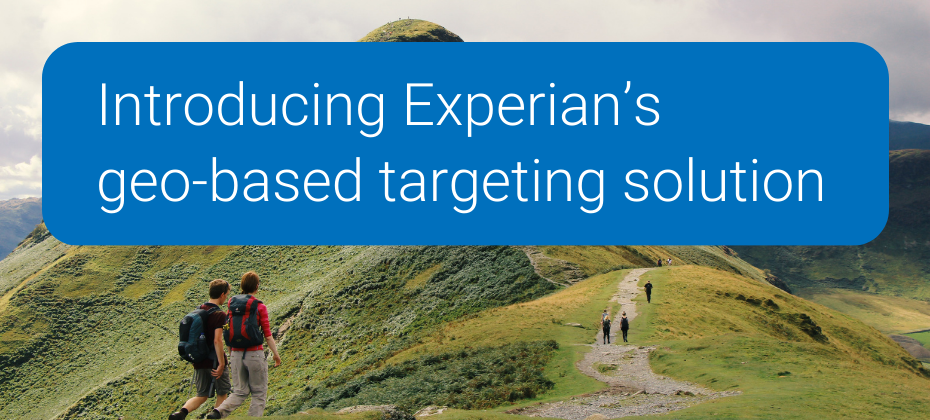
Experian is excited to introduce our new Geo-Indexed audiences. Our Geo-Indexed audiences use a new advanced indexing classification technology to identify and reach consumers based on their geo-regional attributes. These audiences can help you discover, segment, and craft messaging for consumers without the use of sensitive personal information, so you can confidently reach your target audience without sacrificing data privacy. In this blog post, we’ll review how our new Geo-Indexed audiences can help you reach your audience while balancing data privacy and accuracy. How we collect and use data is changing The AdTech industry is undergoing a transformation as various forces shape its trajectory. One significant factor is legislation, with as many as 26 states currently considering data privacy laws. Consumer preferences also play a crucial role, as more individuals look to brands for responsible and ethical data handling practices. According to Forbes, 82% of people view brands positively when they consciously opt to refrain from using personal data for personalized ads. Major players in the field such as Apple and Google are actively pushing for a shift away from traditional methods like cookies and other identifiers in data collection and usage. These developments mark a considerable shift in how we use data. Many brands are seeking a few solutions to continue to find and reach their target audience online, but at Experian, we see a great opportunity for innovation and impact within geo-based targeting solutions. “We predict that over the next year, you will begin to see innovations in geo-based targeting methodologies that satisfy the industry's need for audience targeting with responsible data strategies. By embracing innovations in geo-based targeting and adhering to responsible data strategies, you can not only comply with these laws but continue to reach your intended audiences effectively.”jeremy meade, vp, marketing data & operations Introducing Experian’s Geo-Indexed audiences Geo-Indexed audiences from Experian allow brands to reach consumers and households based on geographic regions that over-index for a common set of attributes. Our Geo-Indexed audiences give brands the ability to: Stay connected: Maintain a touchpoint with consumers as other audience targeting solutions disappear or reduce scale due to new legislation. Expand your audience reach: With our sophisticated geo-indexing methodology, you will be reaching your target audience’s circle of influence within the geo-region. Execute where you want: By linking our Geo-Indexed audiences to Experian’s persistent identifiers, you can activate these audiences on the shelf of your platform of choice. As a part of the release of Geo-Indexed audiences, we will be rolling out three main categories: Language Ethnic Group Demographics which include: Education Household Income Marital Status Occupation Presence of Children Over the next year, we will continue to release new audiences within Geo-Indexed audiences. How you can use Geo-Indexed audiences An Auto brand has a new corporate policy restricting the use of sensitive personal information in audience targeting but would like to reach high-income earners. To reach their target audience they use the Geo-Indexed audiences to reach households who are in geographic regions that index highly for income ranges ‘$175,000 - $199,999’ and ‘$200,000+.’ Prioritize privacy without sacrificing accuracy with Experian’s Geo-Indexed audiences Our Geo-Indexed audiences are available in most major data and demand-side platforms. Visit our partner page for more information. Don’t see our audiences on your platform of choice? We can help you build and activate an Experian audience on the platform of your choice. Connect with our audience team Latest posts

A few weeks ago, Experian and OpenX hosted a supply-side think tank at our New York City office. Over 70 industry leaders met to talk about targeting in a cookieless future and how we can reach consumers in intentional ways. Publishers and supply-side partners shared what challenges they face, what solutions they’re considering, and what the future holds once the third-party cookie begins to deprecate in 2024. In this blog post, we’ll cover the top challenges, cookieless solutions, and actionable strategies we discussed at the event that can help publishers, their partners, and agencies make informed decisions about how to navigate tomorrow’s digital ecosystem. Four main challenges Four main challenges were discussed at the event: First-party data monetization Publishers possess a wealth of first-party data, but collecting and centralizing this information can be difficult for actionable insights. Streamlining data centralization and organizing first-party data is crucial for effective decision-making. Even with a wealth of first-party data, it's important to be aware of any blind spots in your data and enrich those gaps with data partners rooted in offline connections. “We appreciate the opportunity to participate in the supply-side think tank led by OpenX and Experian, two industry leaders in navigating a cookieless future. We're excited to collaborate with them on testing privacy sandbox APIs, identity resolution products, and audience development tools to enhance creator monetization and support an open internet amidst rapid technological and regulatory shifts.” Patrick McCann, SVP, Research, Raptive Lack of authenticated data and persistent IDs The deprecation of third-party cookies means there will be a shortage of authenticated user data and persistent identifiers. Without this information, targeting and personalization become more challenging. Participants discussed the need to find alternative ways to gather and use personal data responsibly. It’s time to start evaluating data partners who have accurate, multi-source compiled, privacy-compliant data with the dedication to reach and recency. Fragmentation and scale with alternative IDs currently in the market The multitude of alternative identifiers in the market poses a challenge for publishers. Each of these identifiers comes with its own set of rules and integration processes, leading to fragmentation and complexity. Publishers must find ways to navigate this landscape. Look to ID agnostic partners who provide a way to access multiple IDs at scale. “The industry needs a more streamlined standard to integrate alternative IDs, given the ongoing challenges of third-party cookie deprecation, measurement, and clean rooms. This burden falls heavily on product and engineering teams, who must prioritize and address these issues one at a time.” Ryan Boh, Head of Identity, Lockr Time Cookie deprecation is almost here. It is crucial to organize your legal, engineering, and product resources, and align internal go-to-market strategies. Establish partnerships that work with your team to follow these timelines and help build phased or cohesive strategies to prepare for a path to monetization. It is imperative to establish a sense of urgency and not wait for others to take the lead. Start testing now to determine if your infrastructure is ready and capable. Many partners who attended the think tank offered insights on how they’ve been tackling challenges to help their industry peers. Solutions and action plans for a cookieless future Participants discussed ways they are starting to prepare for a cookieless future and other approaches on their roadmaps: Work with data partners heavily rooted in offline data across the ecosystem Enriching your first-party data with partners who rely on offline IDs can help bridge gaps in your audience knowledge. This approach allows you to build a more complete audience profile while third-party cookies are still operational. Experian is rooted in deterministic offline data and has decades of experience managing it safely. We have insights on over 250 million U.S. consumers and 126 million U.S. households. With our digital technology assets, we bring in 4 billion devices and 1 trillion device signals to definitively connect offline records to online identifiers. With Experian identity widespread adoption throughout the industry, we're able to provide a common language for us all to collaborate. Experian identity organizes people into households, links their digital devices and IDs to them, enriches their identity with behavioral attributes, and then makes this data actionable in any environment, all while maintaining consumer privacy and data regulations. “Experian’s supply-side think tank provided a platform for publishers and AdTech companies to discuss the challenges posed by cookie deprecation, privacy regulation updates, and identity restrictions. It highlighted the need for AdTech companies to assist publishers in addressing anonymous users without requiring a value exchange -- fostering a mutually beneficial and privacy-compliant open web solution.”Anthony Caccioppoli, Head of AdTech & Solutions, Insider Develop your own persistent ID Creating and maintaining a proprietary persistent ID can be a valuable cookieless solution. It provides control and independence in the new environment post cookie, giving publishers the ability to maintain a consistent user profile. Use your data to expand contextual targeting opportunities Contextual targeting involves placing ads based on the content of the web page rather than user data. In the absence of cookies, this strategy can prove effective in reaching relevant audiences. “The masking or deprecation of IP addresses will eventually impact the availability of addressable IDs in non-authenticated web environments. In addition to ensuring maximum resiliency of our Graph and increasing support for authentication-based IDs, we are also investing in research and development around the use of other signals, such as contextual data, to maintain behavioral targeting inside non-authenticated environments. We will be sharing our findings and future plans in this space in the coming months.”Budi Tanzi, VP, Product, Experian Facilitate a knowledge exchange Reach out to your network to find out what others are testing and what’s working. Start collaborating with agencies and brands across the buy-side to meet their needs. “The collaborative spirit displayed by our partners constantly inspires me. Listening to the obstacles our industry faces allows this community to build strong relationships, create action plans, and deliver true value.”Carly Allcorn, Account Executive, Publisher & Supply-Side Partnerships, Experian Invest in an identity graph Invest in an identity graph provider to sync first-party cookies and addressable IDs. This ensures that your data remains accessible and actionable in a cookieless world. “Many participants at our think tank with Experian expressed the need to find an identity solution while also exploring other ways they can start to address cookie deprecation while maintaining business as usual.” Callie Askenas, Director of Publisher Development, OpenX How Experian and OpenX can help Graph from Experian captures all available digital identifiers in real-time and resolves them back to individuals and households. We’re signal agnostic, continuously expand the IDs we support, and futureproof identity resolution through a combination of deterministic, probabilistic, and cookieless identifiers. Experian is a key player in OpenX’s OpenAudience solution and helps to power many of their data segments as well as their identity graph. While OpenX collaborates with a variety of providers and operates a fully interoperable platform, Experian remains valuable to the core technology within OpenX’s supply-side platform (SSP). Experian can help you prepare for the cookieless future It’s clear that the cookieless future poses some unique challenges for publishers, but there are solutions. Publishers and their supply-side partners can come up with strategies to target consumers in intentional ways by continually testing multiple identifiers and cookieless solutions, developing their own persistent ID, creating velvet rope content, and returning to contextual targeting. Collectively, these actionable strategies can help ensure that publishers have a more successful transition into a cookieless future. Experian has been preparing for signal loss for quite some time and we continue to make substantial investments to ensure our resiliency and the resiliency of our customers. We continue to diversify our signal creating profiles with more persistent identifiers which allows us to pair authentication-based universal identifiers such as UID2 into our Graph seamlessly. Experian is ready and we are here to navigate the future of privacy together. To find out more about how Experian can help you prepare for the cookieless future, get in touch with a member of our team today. Get ready for the cookieless future with Experian Latest posts

Cookies are leaving us, but that doesn’t have to mean performance has to. That’s why Experian is taking the steps needed to future-proof identity in our Graph, including adding Unified ID 2.0 (UID2) from The Trade Desk. Experian currently supports UID2 in our Graph outputs for demand-side platforms (DSPs). UID2 support in our Graph outputs will be available to all approved partners by December 2023. In this blog post, we talk about why cookieless IDs, like UID2, that are coming to market because of cookie deprecation, are important, and how incorporating cookieless IDs into an identity graph can help you prepare for a cookieless future. What are cookieless IDs? Like cookies, cookieless IDs provide you with a comprehensive view of a consumer’s digital activity. Unlike cookies, identity providers produce cookieless IDs, using user-consented data and deterministic and probabilistic data signals (like hashed emails or mobile ad IDs). Cookieless IDs are a newer identifier that allows the advertising industry to maintain our understanding of consumers’ digital actions, helping to ensure we continue to generate smart, data-driven insights, targets, activation strategies, personalized experiences, and measurement and attribution. Why should you incorporate cookieless IDs into an identity graph? Adding cookieless IDs to an identity graph allows for licensees of the graph to: Resolve the universal ID to a consolidated consumer profile and know which other digital IDs tie to the cookieless ID Establish a unified view of the consumer with a privacy-compliant ID Produce data-driven and informed advertising strategies that still drive results, without the use of cookies Experian’s Graph Experian’s Graph is one of the most robust and signal agnostic identity graphs in the market. Experian’s Graph supports most digital IDs, including cookieless IDs, such as ID5, UID2, and Hadron ID. When you license Experian’s Graph, you increase your ability to better understand the different digital IDs that tie to a household or individual. Additionally, with our cookieless ID support, you can continue to understand your consumer and their digital IDs in the cookieless world. Why is it crucial to include UID2 support in Experian's Graph outputs? The Trade Desk is the largest, independent demand-side platform. They’ve created a cookieless ID, UID2, that they hope can power the advertising world to come across the open web. UID2 is an alternative solution to third-party cookies that when utilized in an identity graph, can offer a clearer picture of your consumer, enabling frequency controls and better management, across both digital and connected TV (CTV). Approved DSPs can add UID2s to their Experian Graph, giving them access to one of the more trusted and prominent cookieless IDs in the market today. Additionally, DSPs can use this identifier to decide whether to bid on certain inventory or not, on behalf of their advertiser partner. And, if we hedge our bets, it will only grow in prominence and use. While only available to approved DSPs today for use in the Experian Graph, the forthcoming encrypted UID2 token will provide this capability to the entire ecosystem, which allows us all to speak the same language and operate as efficiently as possible. "We are excited to support UID2, one of the premier IDs to support the future of addressability across the open internet, in the Experian Graph. We continue to see the adoption of UID2 across the demand-side ecosystem, increasing addressability across growing channels like CTV and beyond. I am personally excited to see how this momentum continues to increase over the remainder of 2023 and into 2024."chris feo, svp, sales & partnerships, experian Future-proof your identity strategy with Experian Graph and UID2 We’ve seen the impact that cookies have had on digital advertising and marketing. With the impending third-party cookie deprecation, you will need to adopt alternative cookieless ID solutions such as Unified ID 2.0. Experian is well-positioned to help you navigate this change, offering UID2 support in our Graph outputs for all approved partners by December 2023. Take the right steps now to future-proof your identity strategy and discover lasting success even without cookies. Alongside Experian’s Graph solution, you can achieve resilience in an ever-changing world of digital marketing and advertising. Now is the time to get ready for a cookieless future. Connect with an Experian team member to learn more about our Graph capabilities today. Learn more about Experian's Graph today Latest posts

We are excited to announce that we’ve updated our CAPE data with 2020 Census data. This release updates estimates and projections from 2010 and replaces all previous CAPE data attributes. U.S. Census data offers a great opportunity for data enrichment The U.S. Census is conducted every 10 years to determine the number of people living in the U.S. in addition to collecting data on dozens of topics across 130+ surveys and programs. U.S. Census data is already broken out into regional groups and covers 100k+ different geographies: States, counties, places, tribal areas, zip codes, and congressional districts. Block groups are the smallest geographic area for which the Bureau of the Census collects and tabulates data. They are formed by streets, roads, railroads, streams, other bodies of water, and other visible physical and cultural features. What is CAPE? Census Area Projections & Estimates data (CAPE) data from Experian utilizes a proprietary methodology to make the data easy to action on for marketing use cases. Made from U.S Census and Experian consumer data, CAPE data sets are developed at the block group and zip code level and targetable at the household level. CAPE 2020 updates CAPE 2020 uses the 2020 Census data blended with other Experian data to update CAPE’s unique attributes for data enrichment and licensing. Multiple sources are used and data is delivered at a block group level or zip code. Experian provides unique CAPE attributes not available through other sources that provide Census data. These include our Ratio and Percentages attributes, Score Factors/Segments, and Mosaic. CAPE 2020 use cases Our CAPE 2020 data sets enable strategic marketing analysis and decision-making. You can use CAPE 2020 data to understand the differences in the markets you serve as they relate to core demographics, housing attributes, education, income, employment, spending, and more. You can do this to: Find populations that are not typically captured in standard demographics. Cross-reference Census demographics data with other behavioral and shopper data. Understand supply and demand for products sold. Get started with our CAPE 2020 data today If you are using Experian’s CAPE 2010 data, please work with your Experian representative to migrate to CAPE 2020. If you are interested in learning more about our CAPE data, get in touch with us today. Latest posts